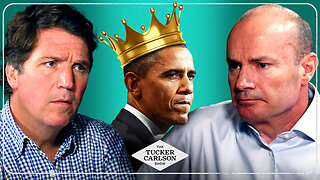Primes, divisibility and infinities
Prime numbers, rules for divisibility of whole numbers, and different types of infinity.
Formulas for Generating Primes
A simple formula for generating prime numbers is: if p is a prime number, then p = 6n ± 1 for n greater than 3. That generates any prime number larger than 3. For example, if we take 591, divide 590 or 592 by 6, in either case we arrive at a decimal number, so 591 is not prime. But 601 is, since 600 divided by 6 is 100. Notice that if you add up the digits of 591, that is 5+9+1=15. Since 15 is divisible by 3, so is 591.
A little more mathematical way to write the above is: if p = ±1 (mod 6), then p is prime.
That is generalized as n+1 is prime, if n! ≡ n (mod n+1).
If p greater than 40, then 𝑛^2+𝑛 + 40 = 40 will be prime for any whole number n greater than 0.
Note: since superscripts are not allowed in this description, we use ^2 to indicate a squared number.
The divisibility rules for whole numbers to 13
Any even number is divisible by 2
Three: the sum of the digits is divisible by 3.
Four: the last two digits of a number are divisible by 4.
Five: the last digit of a number is five or zero.
Six: the number has to be even and divisible by three.
Seven: subtract twice the last digit of the number from the remaining digits (e.g. 658 is divisible by 7 because 65 - 2 (8) = 49, a multiple of 7)
Eight: the last three digits of the number are divisible by 8.
Nine: the sum of the digits is divisible by 9.
Ten: the number ends in zero.
Eleven: the difference of the alternating sum of the digits is a multiple of 11 (e.g. 2552 is divisible by 11 because 2 - 5 + 5 - 2 = 0, which is a multiple of 11. Also, for 3927, (3 – 9) + (2 – 7) = (-6) + (-5) = -11)
Twelve: the number has to be divisible by four and three.
Thirteen: 4 times the units digit of the number plus the number obtained by removing the units digit of the number is a multiple of 13 (e.g. for 2925, 292 + 4(5)=312 = 13(24))
Countable Infinity
The simplest of these is the endless set of counting or natural numbers. They soon realized that these are associated with something called countable infinity, since any set whose elements can be assigned counting numbers is thus countable. Take for example the set of rational numbers. Since they can be written as p/q, where both p and q are integers, but q≠0, you can count them.
For example: 1/1. ½, 1/3, ¼, 1/5, 1/6, 1/7 and so on. This set of fractions can be paired with the set of counting numbers. That is true for whatever you make the numerator. This also holds for sets like 1/1, ½, ¼. 1/8, 1/16, 1/32, 1/64, 1/128... that is 1/2^n. You can show that this is true for all rational numbers.
Uncountable Infinity
But now comes the next, more intriguing discovery about infinity. There are numbers which are uncountably infinite. The set which first presents itself is the irrational numbers. Although you can write the irrational square roots of prime numbers in order, the problem arises when you try to identify where they are in relation to the rational numbers. For example, the square root of 2 is somewhere between one and two. You begin with approximations: it is between 1.4 and 1.45 which squared gives 1.96 and 2.1025. Next you go to 1.41 and 1.43, which provide 1.9881 and 2.0449, you continue but realize that you may come close, but never reach 1.414213562..., because of that nasty ellipsis, the dots, at the end.
Magnitudes of Infinity
When mathematicians discovered the distinction between these two types of infinity, they also found that the countably infinite number of fractions is smaller than the uncountably infinite set of irrational numbers. As a more or less tangible way of showing this, look at the square root of two above. It is an infinite, never repeating decimal. Since each digit has 10 possible alternatives, one irrational number like the square root of two may generate 10^n possible numbers, where n is any counting number. Multiplying this infinite number by the infinite number of square roots of primes is a formidable set of infinite numbers. Most importantly, they cannot be counted, since any one of them is only an approximation between countable rational numbers.
-
 LIVE
LIVE
Tucker Carlson
2 hours agoSen. Mike Lee: Witnessing Biden’s Decline, and Obama Seizing Power From the Shadows
20,223 watching -
 1:17:02
1:17:02
Redacted News
2 hours agoBREAKING! ISRAEL BOMBS LEBANON, NATO TELLS CITIZENS TO GET OUT NOW BEFORE FULL BLOWN WAR | REDACTED
22.2K137 -
 2:16:07
2:16:07
Pardon My Take
6 hours agoAlabama HC Coach Duggs Starts His National Championship Run
7.89K3 -
 57:55
57:55
The Osbournes
2 hours agoOzzy Apologies to Britney Spears & Sharon Tries the Hawk Tuah
1443 -
 LIVE
LIVE
Revenge of the Cis
2 hours agoEpisode 1357: Weird
3,411 watching -
 LIVE
LIVE
Due Dissidence
8 hours agoVenezuela Election, Biden's SCOTUS Hail Mary, CRINGE 'White Dudes for Kamala' Call - w/ Kit Cabello
1,996 watching -
 19:00
19:00
Dr David Jockers
1 hour agoThe Shocking Truth About Saturated Fat
133 -
 1:20:49
1:20:49
vivafrei
2 hours agoThe FBI and Secret Service are COMPLICIT in the MIHOP and Cover-Up! Viva Frei Live!
18.3K51 -
 1:16:37
1:16:37
Awaken With JP
4 hours agoIt's Fact Checking Season! - LIES Ep. 50
41.3K137 -
 1:44:15
1:44:15
The Quartering
6 hours agoBig Tech ADMITS They Censor Trump, White Guys For Harris Cringe, Mark Hamill Rock Bottom, Olympics
49.1K43